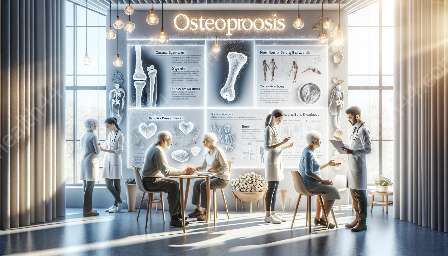Managing osteoporosis involves understanding the role of exercise and physical activity in improving bone health and managing related health conditions. Explore tips, benefits, and considerations related to exercise for individuals with osteoporosis.
The Importance of Exercise for Osteoporosis
Osteoporosis is a condition characterized by low bone density and an increased risk of fractures. Regular exercise and physical activity are essential for managing and improving bone health in individuals with osteoporosis. Exercise helps in preserving and strengthening bone mass, reducing the risk of falls, and maintaining overall physical function.
Benefits of Exercise and Physical Activity
Engaging in appropriate physical activities offers a range of benefits for individuals with osteoporosis. These benefits may include:
- Strengthening Bones: Weight-bearing and resistance exercises can help to strengthen bones and improve bone density.
- Improving Balance and Coordination: Balance and coordination exercises can reduce the risk of falls and related fractures.
- Enhancing Muscle Strength: Strengthening exercises can help to maintain and improve muscle mass, which supports overall physical function.
- Boosting Overall Health: Exercise can contribute to overall well-being by improving cardiovascular health, reducing the risk of obesity, and enhancing mental well-being.
It's important for individuals with osteoporosis to consult with their healthcare providers to determine the most appropriate types and intensities of exercise based on their individual health status and risk factors.
Types of Recommended Exercises
For individuals with osteoporosis, a well-rounded exercise routine typically includes a combination of weight-bearing, resistance, and flexibility exercises. Some recommended types of exercises include:
- Weight-Bearing Exercises: Walking, hiking, dancing, and stair climbing are examples of weight-bearing exercises that help to strengthen bones and improve bone density.
- Resistance Exercises: Strength training using free weights, resistance bands, or weight machines can help to build and maintain muscle mass, which supports bone health and physical function.
- Flexibility Exercises: Stretching and yoga can help to improve flexibility, balance, and posture, reducing the risk of falls and fractures.
Individuals with osteoporosis should engage in a tailored exercise program that addresses their specific needs and limitations. It's crucial to choose activities that are safe and enjoyable while being mindful of any existing health conditions or physical limitations.
Considerations for Exercise and Osteoporosis
While exercise is beneficial for individuals with osteoporosis, certain precautions and considerations should be taken into account:
- Consultation with Healthcare Providers: It's essential to seek guidance from healthcare professionals before starting any new exercise program, especially for individuals with existing health conditions or concerns.
- Proper Form and Technique: Engaging in exercises with proper form and technique can help to minimize the risk of injury and maximize the benefits of physical activity.
- Gradual Progression: Starting with gentle and low-impact exercises and gradually progressing in intensity can help to prevent excessive strain on bones and muscles.
- Balance and Fall Prevention: Incorporating balance and coordination exercises, along with home safety measures, can reduce the risk of falls and related fractures for individuals with osteoporosis.
Ultimately, integrating regular physical activity into daily life can significantly contribute to managing osteoporosis and promoting overall health. By incorporating tailored exercise programs and considering individual health needs, individuals with osteoporosis can enhance their bone health and overall well-being.


